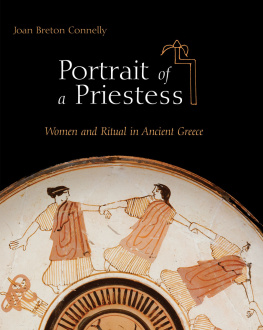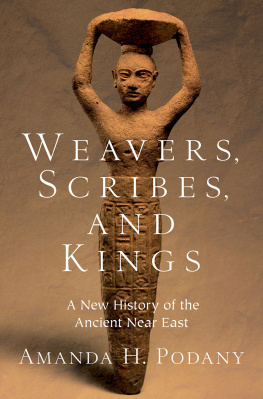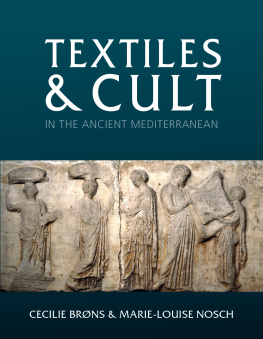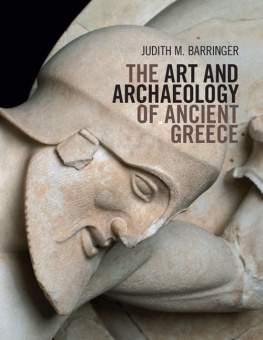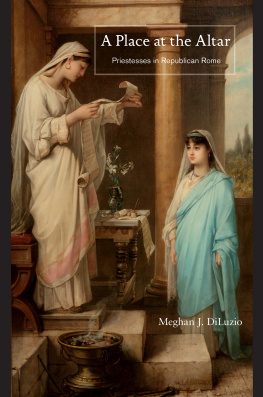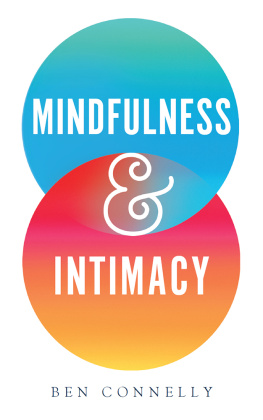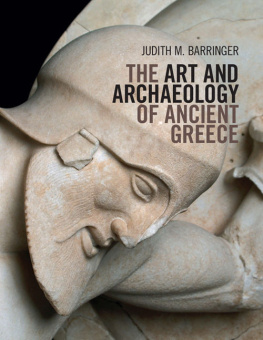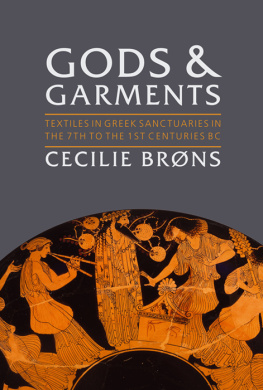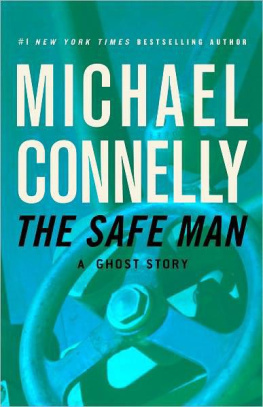Portrait of
a Priestess
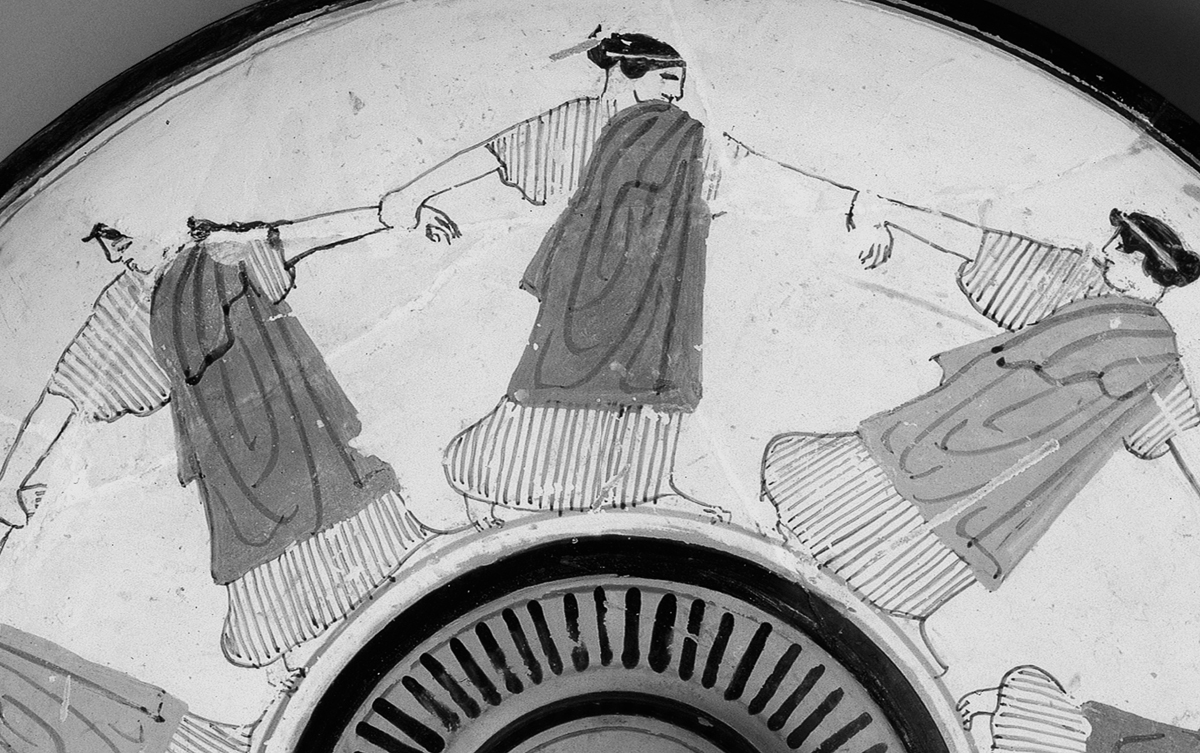
Portrait of
a Priestess
Women and Ritual
in Ancient Greece
Joan Breton Connelly
PRINCETON UNIVERSITY PRESS
PRINCETON AND OXFORD
This publication has been supported by a grant from Charles Scribner III in memory of his father, Charles Scribner, Jr., a past president and trustee of the Princeton University Press, and with his additional grant for this paperback edition in memory of President Robert F. Goheen.
Copyright 2007 by Princeton University Press
Published by Princeton University Press, 41 William Street, Princeton, New Jersey 08540
In the United Kingdom: Princeton University Press, 6 Oxford Street, Woodstock, Oxfordshire
OX20 1TW
All Rights Reserved
Paperback ISBN: 978-0-691-14384-2
The Library of Congress has cataloged the cloth edition of this book as follows
Connelly, Joan Breton, date.
Portrait of a priestess : women and ritual in ancient Greece / Joan Breton Connelly.
p. cm.
Includes bibliographical references and index.
ISBN-13: 978-0-691-12746-0 (hardcover : alk. paper)
ISBN-10: 0-691-12746-8 (hardcover : alk. paper)
1. GreeceReligion. 2. Women and religionGreece. 3. Women priestsGreece.4. GreeceAntiquities. 5. GreeceHistory146 B.C.323 A.D. I. Title.
BL795.W65C66 2007
292.6'10820938dc22
2006013073
press.princeton.edu
Front cover and spine, frontispiece: Attic white-ground phiale (detail). Plate 1
Back cover: Attic black-figure amphora (detail). Plate 12
Chapter details: , detail of marble relief. Berlin, Staatliche Museen Antikensammlung SK 881. Photo Antikensammlung, Staatliche Museen zu Berlin, Bildarchiv Preussicher Kulturbesitz
eISBN: 978-1-400-83269-9
R0
For Dorothy, Cacky, TA, and Kippy
Acknowledgments
The idea for this book was born in Brunilde Ridgways office in the Thomas Libary at Bryn Mawr College in 1988. Bruni had recently published her groundbreaking article Ancient Greek Women and Art: The Material Evidence in the American Journal of Archaeology. I had just published Votive Sculpture of Hellenistic Cyprus, bringing me face to face with my first Greek priestess (see pl. 14). Intrigued by this and other images of women shown holding temple keys, I resolved to study them next. I thank Bruni Ridgway, above all others, for standing behind this book from start to finish.
The foundations on which the book is built were set much earlier on. For this, I thank Mary Lefkowitz, who, at Wellesley College, first opened for me the world of ancient women and Greek myth. Her thoughtful insights have informed this work throughout its writing.
A lively interest in Greek religion stems from my undergraduate days, as well, when I was lucky enough to enjoy epic summer road trips to Brauron and Eretria with Lilly Kahil in her Citron DS. When I began this book years later, she invited me to Paris as a foreign member at the Lexicon Iconographicum Mythologiae Classicae and helped in every way. Dorothy Thompson put the first terracotta votive figurine in my hand when I was twenty, and, throughout the decades that followed, guided me as the wisest and most generous of mentors. I am privileged to have been a member of Erika Simons seminar Festivals of Attica, during the year in which she delivered her memorable Flexner Lectures at Bryn Mawr. I owe an enormous debt to these excellent teachers and to the esteemed colleagues with whom I have discussed Greek religion during the years that have followed. I particularly thank Christiane Sourvinou-Inwood and Robert Parker for the generosity and insight with which they have shaped my understanding of the ancient past.
Much of what I have learned about Greek religion has come from the sanctuaries in which I have been privileged to excavate: Apollo at Corinth, Zeus at Nemea, Apollo Hylates at Kourion, Artemis on Failaka, and the island sanctuary of Yeronisos off western Cyprus where I have worked for the past sixteen years. I thank my extraordinary team and the Peyians and Paphians who have brought such joy to this labor. Theresa Howard Carter, director of our work in Kuwait, has been the best of mentors in the field and an inspiring friend, in the trenches and out.
A New York University Presidential Mellon Fellowship and National Endowment of the Humanities Travel to Collections Grant supported my research in its earliest years. I was thus able to begin my work at the Beazley Archive Database in Oxford, where I thank Donna Kurtz, Thomas Mannack, and Melanie Mendoza. These grants also supported my research in Paris, where I had the privilege of attending seminars at the Centre Louis Gernet. As is evident throughout this book, the work of Stella Georgoudi, Alain Schnapp, Franois de Polignac, and Franois Lissarrague has greatly informed my approach. I warmly thank them for the rich scholarly exchange that continues through my participation with the research team on cult personnel for the Thesaurus Cultus et Rituum Antiquorum.
A MacArthur Foundation fellowship supported years of research and writing, and I am deeply grateful to the John D. and Catherine T. MacArthur Foundation, particularly to Adele Simmons and Catharine Stimpson, under whom the award was made. This enabled me to work at Oxford, where I enjoyed a number of visiting fellowships. I am indebted to the Warden and Fellows of All Souls College, where I spent a very happy year, as a result of the special kindness of Margaret Bent, John Ma, M. L. West, Peregrine Horden, Magnus Ryan, Julian Bullard, Patrick Reilly, Gunther Treitel, Jack McManners, John Landers, William St. Clair, and Patrick Neill. I am deeply grateful to Robert Parker for sponsoring me at New College, Oliver Taplin at Magdalen College, and Ewen Bowie at Corpus Christi College, and to the many scholars who enriched my time within each of these remarkable communities. I thank Michael Vickers, Emily Kearns, Nicholas Purcell, Beate Dignas, and Robin Osborne for their generosity in discussing specific aspects of my work. At Cambridge, I have benefited greatly from scholarly exchange with Anthony Snodgrass, Colin Austin, Nigel Spivey, James Diggle, and Louise and Martin Robertson.
I was privileged to spend a term at the Radcliffe Institute for Advanced Study, thanks to Mary Maples Dunn. I thank her, as well as Gregory Nagy, Ernst Badian, and Karen King, for making my time at Harvard both pleasant and productive. While finishing this book I returned to Bryn Mawr, where I enjoyed two terms as a research associate. I am indebted to Rick Hamilton, Stella Miller-Collett, Mabel Lang, Julia Gaisser, T. Corey Brennan, Radcliffe Edmunds, Karen Tidmarsh, and the best of librarians, Eileen Markson, for their generous help and friendship. Kippy Stroud and her Acadia Summer Arts Program have provided the ideal environment for thinking and writing at the close of so many perfect summers, and I thank her for cheering on this work at every turn.
I am indebted to the administration and faculty at New York University for supporting my research, especially Richard Foley, Mary Carruthers, Edward Sullivan, Matthew Santirocco, Kenneth Silver, Norbert Baer, and Dick Turner. I warmly thank Lillian Vernon, whose chair I have been honored to hold, for her generosity and for her example, which has inspired me greatly. I am indebted to my students at NYU for the lively questions and keen interest that helped to shape this book.
I thank the scholars who kindly provided access to materials and permissions to reproduce photographs, including Katerina Rhomiopoulou, Alcestis Choremi, Nikolaos Kaltsas, Charalambos Kritzas, Dina Peppa-Delmouzou, Petros Themelis, Dyfri Williams, Alex Truscott, Michael Vickers, Susan Walker, Annie Caubet, Fede Berti, Bodil Bundgaard Rasmussen, Irene Bsel, Michael Krumme, Michael Padgett, John Hermann, Florence Wolsky, Brigitte Freyer-Schauenburg, Jane Sattenau, Brian Shefton, Ilknur zgen, Turhan Birgili, Orhan Atvur, Christopher Ratt, Brad Cook, John Traill, Aileen Ajootian, and Marina Thomatos.

